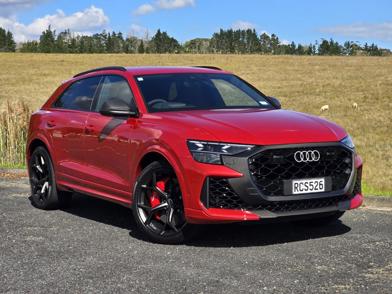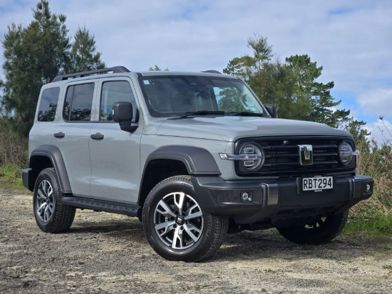It’s as normal a sub-compact could be, the new 2024 MG HS. No hybrid badges, no EV componentry, no all-wheel drive, no battery this or that (for now). The updated and improved MG HS represents a solid step forward for the Chinese brand, and another reminder that MG is putting in rather impressive efforts by making very good cars.
Not forgetting the MG4 is the current NZ AA DRIVEN Car of the Year, the HS has been a mainstay for the brand in its modern SAIC incarnation, and as both a self-proclaimed leader and disruptor in the SUV sector.
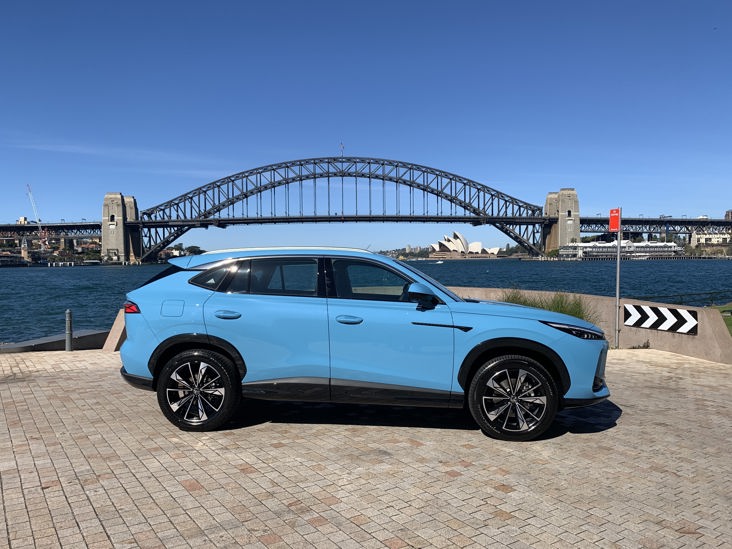
The sub-compact SUV HS is the second-gen model, and all new, rebuilt from the ground up with, MG says, new technology, safety and sophistication.
A cornerstone for families, the launch model comes in just one version, with the petrol 1.5-litre, petrol four-cylinder and front-wheel drive through a dual-clutch gearbox. All very conventional, all very easy to understand and all along the lines of a good thing made better: MG says the engine is 30% more responsive than previous, helped by a lighter flywheel, a variable geometry turbocharger and a water-cooled intercooler, to minimise turbo lag. However, premium unleaded is stipulated.
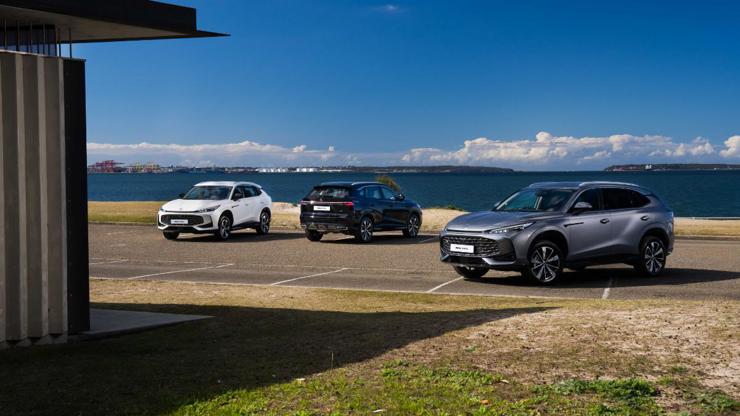
There are three variants in the range: the Vibe, Excite and range-topping Essence, at $36,990, $39,990 and $42,990 respectively, with expected levels of equipment and spec in each trim level. No external badging though, to differentiate them, so it’s a matter of looking for the sunroof on the top model, or the one-inch smaller 18s on the Vibe, for example. It’s all rather easy to digest, for now, though hybrid and plug-in hybrid versions are due in the first half of 2025. We’ll deal with them, then.
For now, the HS offers a bit more power and torque thanks to a new, stronger 7-speed dual-clutch gearbox, now rated to 300Nm, over the previous 250Nm.

“Bold, aggressive, stylish and sexy,” is how MG Head of Product Akshat Ahuja (AK for short) described the new HS at its launch in Sydney last week. And there’s enough to back-up the quotes: it’s a modern appearance, with its new face, new design language, thinner family grille, slim LED headlights connected by a horizontal line and swage lines that run from the headlights to taillights.
A thinner MG logo moves from grille to a more traditional spot on the bonnet, which adds an element of conventional styling, while the rear light bar LEDs and rear spoiler, three-flow diffuser, and dual exhaust outlets (OK, they’re fake), offer a squinty glimpse of Range Rover styling, especially in darker colours.

It’s also 81mm longer, 14mm wider and 45mm larger in wheelbase, so like is tradition, the model is growing both outside and in.
Rear passenger space is the biggest benefactor of the resizing, despite it also being lower in overall height, with air vents, USB ports, grab-handles and lights, plus a centre flip-down armrest/cupholder, when the fifth seat isn't being used.
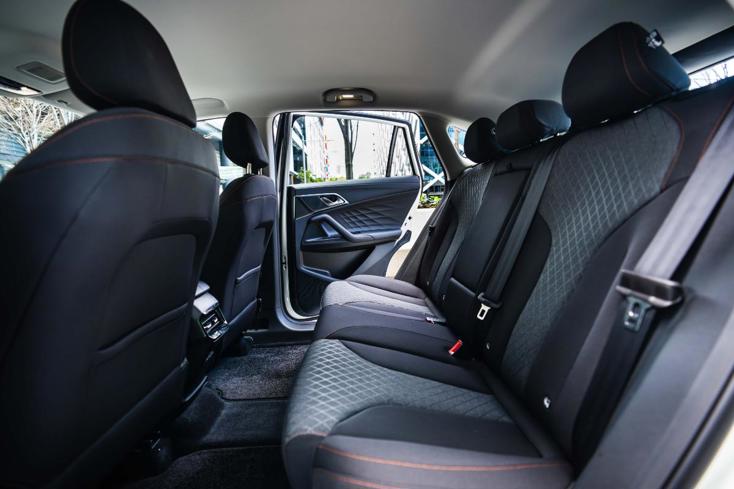
In the front compartment, there’s the 2024 buzz-word: simplicity. It’s a clean design, uses an MG4 steering wheel so there’s familiarity with controls and also the ability to select various button presets and controls, while there’s a new dual floating 12.3inch HD instrument screen, with privacy angle tint so the spouse can’t monitor (and admonish) speed, for example.

It’s a virtual gauge cluster, too, with either a light or dark theme, three modes for map, digital or driver assists, but it all just works well to pick-up and go, or dig deeper and personalise.

There’s also a 12.3in HD screen for infotainment, with wired CarPlay/Android. It’s a very minimalistic design, which is both good and bad, and carries on from previous. Looks great, the screen resolution is brilliant, but lacks a volume dial or buttons, aside from the touchscreen that needs to be selected depending on which screen you’re in/watching, or via the button on the steering wheel – which is perfectly fine for the driver, less so for the passenger.
The tech is loaded, and with DAB and MG’s iSmart connect tech, there’s a lot to play and learn and use – much more than our 45-minute loop on a gorgeous Spring day over the Sydney Harbour Bridge and straight back via the Harbour Tunnel allowed.
A 360 degree camera is helpful and generates a road surface around the car, which is very handy for tight spots. And an embedded SIM allows the car to be remote controlled via a smartphone and monitored for things like locking and lights, AC and seat heating and the ability to operate the horn and lights.

The materials of cloth and PVC work well, and a diamond finish on the door trims and seats lend themselves to an air of visual luxury. The interior in functional, with cupholders and storage trays, visible/accessible USB and USB-C ports and wireless smartphone charger on the top-spec Essence.
Back to the flexible boot, it’s a big 507 litres (up 44l over previous), or 1441 litres (up 197l) when the rear seats are folded down, but it’s the insulation and sound deadening there, underbody and the passenger cell that makes the HS feel and sound more refined and quieter.

The suspension is also a big improvement and with a primary focus on bumps and speed humps, that’s a good thing for some of our Kiwi roads. There’s also a secondary focus on tar strips, lumps and short waves, covering the smaller imperfections also found. The result is ride and handling on the softer and more compliant side, which is ideal for its purpose and gives the new HS more of a pillow effect to glide over the road garbage.
About the only step back is the turning circle, which increases from 10.6m to 11.3m.
Safety is improved, however with seven airbags including a new centre airbag between front occupants, plus a safer cell, with 82% of the structure being high strength materials, during construction.

Active safety includes four external cameras and MG Pilot’s suite of 15 safety items, such as active cruise control and driver monitoring. This has proven an irritation of recent times, and this is the same system as previous – just five minutes into our drive, an alert advised us to take a coffee break, that we weren’t paying enough attention to the road and that the speed limit was different to the speed at which we were driving – it wasn’t, it just hadn’t picked up the speed change. MG is well aware, and plans are afoot to refine in the somewhat ironic target of dialling down these alerts to improve safety, which form part of the ANCAP five-star safety testing conditions. Though yet to be tested, MG expects five stars for HS.
In the meantime, there are plenty of virtual switches to minimise and deactivate the warnings and alerts, but they still must be chosen upon start-up – made a little easier by programming one of the steering wheel buttons as a shortcut to the screen.

On the topic of buttons, there are no buttons for the temperature or fan controls, so they must be activated through the touchscreen.
However, MG HS is a way more competent, proficient, and refined, and offers an overall improved driving experience, being larger, more comfortable, better equipped and safer than ever before.

In six colours, red, blue and a few conventional white, black and greys, there’s also the option of either a conventional black interior, or a very cool brown interior trim on some of the exterior colours.
That is if you want your new MG HS to be a little more unconventional.
BREAK IT DOWN
MG HS (Vibe, Excite, Essence)
ENGINE: 1.5-litre petrol four-cylinder
POWER: 125kW/275Nm
GEARBOX: 7-speed DCT, FWD
ECONOMY: 6.9l/100km
PRICE: $36,990, $39,990, $42,990














